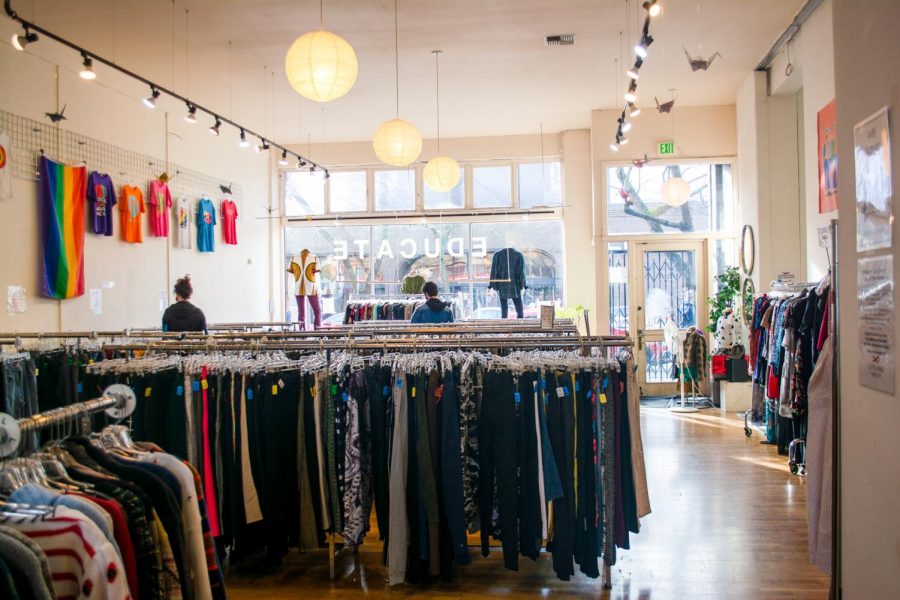The Historical Purpose of Sustainable Fashion
There has been a noticeable rise in second-hand shopping in recent years and many are now turning to thrift stores to change up their look. With people now trying to become mindful of their purchases, or find a few trendy new pieces, the traditional history of thrifting has changed.
Between Millennials and Gen Z Seattleites, there is an appetite for second-hand clothing. From picking up vintage pieces at lower prices to finding hand-me-down denim for less than half the original price, some shoppers in the Seattle area believe thrifting is an alternative way to save money.
Kashish Sekhon, a third-year strategic communication major, was interested in thrifting after taking a required course at Seattle University titled ‘The Value of Work.’
“We read about the workers in fast fashion. I don’t have enough money to shop at the expensive sustainable brands, so I usually thrift or use Depop,” Sekhon said.
While thrifting is just one way to save money, not all those who thrift are individuals in need of the clothing sold at a reduced price. On Depop, re-sellers tend to overprice recycled or thrifted clothing for profit.
Maggie Winicki, a fourth-year nursing major, shops for and sells clothes on Depop.
“Depop is a cool idea, but it takes too much profit from you and people price stuff way too high. I put my stuff at $20 tops,” Winicki said.
As thrifting becomes increasingly popular in Seattle, it counteracts the historic values of thrift stores to provide reduced-cost clothing to people who need it. The overconsumption of thrifting for people who are not low-income causes gentrification noted Khalia Williams-O’Neal, a Youth Program Assistant at Goodwill.
“It is unfortunate that people care more about thrifting because it’s trendy without actually taking into consideration those who truly can’t afford anything outside of thrifting,” Williams-O’Neal said.
Although many families rely on thrift stores because of their affordable pricing, thrifters feel it is not only the financial aspect, but the positive effect it has on the environment, that keeps them coming back.
“Fast fashion is really harmful to our environment, so any way we can combat that strain, I believe is a good thing,” Williams-O’Neal said.
Fast fashion is also detrimental to the environment because of the low-quality material and the mass amount of it that ends up in landfills. In fact, the fast fashion industry is one of the largest polluters on the planet.
“Recycled clothing is healthy for the environment. Thrifting is definitely a trend, but it should be around. The fashion industry is horrible for the environment and never talked about. I think thrifting is a trend, but it’s annoying how rich families brag about it when families in poverty need it,” Winicki said.
Williams O’Neal thought it is unfortunate to see those who can afford to buy from sustainable brands shopping at thrift stores. On the other hand, stores like Goodwill turn their profits to best help their employees and community members in need.
“Store sales are used to fund job readiness trainings, GED programs and other equity and inclusion programs to provide resources for under-resourced communities and people in need,” Williams-O’Neal said.
The steps Goodwill takes to ensure their employees and community are provided with assets show how profits can be turned into something greater than organization itself. Though people who are able to afford fast fashion are encouraged to thrift because of the effect it has on the environment, it is important for them to be mindful of the values of thrifting from the past, and to recognize its original purpose rather than view it as a passing trend.


